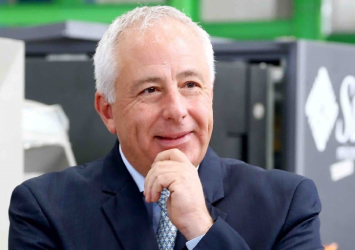Stuart Fleming, Managing Partner – Enviroserve, urges the MENA region not to give up on recycling and, instead, reap the benefits.
One of the solid waste streams with the greatest rate of growth worldwide is e-waste. In 2019, it was reported that approximately 17 percent of e-waste has been collected and recycled. Waste electrical equipment – known as WEEE — which includes ICT equipment, provides prospects for global development by, among other things, ensuring higher living standards, better medical care, quicker logistics, simpler global communication, and just-in-time trading.
However, when improperly managed, abandoned equipment that contains hazardous materials poses significant threats to human health and the environment. This includes everyday items, such as phones, laptops, sensors, televisions, washing machines, air conditioners and refrigerators,
The Global E-waste Monitor’s 2020 edition noted that a record 53.6 million Mt of e-waste was produced in 2019, an increase of 21 percent from 2014. This is a result of shorter product life cycles and designs that do not permit repair or reuse. This, in turn, is caused by the rising number of people utilising WEEE globally, the steady rate of technical advancement and the phase-out of older technologies. The majority of e-waste that cannot be recycled or disposed of using an ESM strategy is either burned or dumped in a landfill.
Valuable materials, such as platinum metal group metals, rare earth metals and other base metals can be found in e-waste. If sent to landfill, these materials cannot be recycled and used as a secondary resource. As a result, priceless resources, such as rare earth elements and precious metals are wasted, and dangerous compounds are released into the environment. This puts the environment in danger and human health at risk.
E-waste management calls for specialised regulation and collection infrastructure. Unfortunately, e-waste is generally inadequately regulated or enforced on a global scale. Countries must enact regulations to mandate ESM treatment and management of e-waste, because these products are a complicated and relatively new waste source.
A law, policy or regulation on e-waste was in place in 78 nations (or 71 percent of the world’s population) in 2019, an improvement on 2017, when 67 countries (or 66 percent of the population) had any such requirements in place.
The possibility of assuring policy implementation and compliance has been determined to be lower since, in the majority of cases, they are neither legally enforceable nor adequately supported financially. Furthermore, most legislative instruments concentrate on improving e-waste management, but not on reducing the volume of e-waste generated. Most legislation and policies do not fully consider practices, such as the repair and reuse of WEEE, even though such practices are favourable according to the globally supported waste hierarchy.
Across high- and low-income countries in the Middle East, the informal sector predominates the e-waste management system. The main causes of informal activity are the lack of e-waste-specific legislation, extended producer responsibility (EPR) policies, and formal recycling facilities in the region. But official and informal sectors coexist in certain countries that have a formal sector, such as Jordan, Qatar, and the UAE.
In the UAE, e-waste that is collected through privately operated companies forms a small percentage of total e-waste. The UAE hosts the only e-waste recycling and processing facility in Africa and the Middle East, with private investment in the state-of-the-art plant operated and owned by Enviroserve. This facility has the capacity to process 40 kt of e-waste per year across the entire range of e-waste (with the exception of refrigerators) and supports the MEA region with five logistical operations for collections. However, owing to a lack of support programmes, a huge portion of e-waste is still routed through the informal sector to export or to landfill.
The good news is that there is momentum throughout the region for a clear and strong legal framework for e-waste, as well as pertinent national policies. These must be introduced, along with some recommendations, such as preventing the generation of e-waste, adopting EPR-based legislation and policies, providing fundamental collection and treatment facilities, improving e-waste collection and treatment, and raising awareness.
Each stakeholder group – including governments, producers, retailers, recyclers and the informal sector – should be given a specific role in creating an effective system that makes it possible for state-of-the-art collection and recycling significantly more e-waste based on the idea of environmentally sound management.
By Stuart Fleming, Managing Partner – Enviroserve



